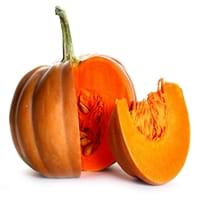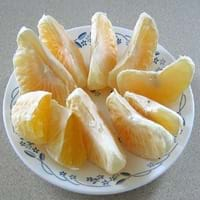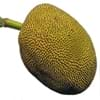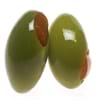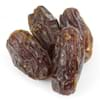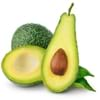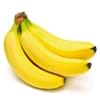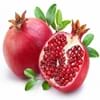Health Benefits
Arthritis treatment, Cancer prevention, High Cholesterol Regulation, Lower blood pressure, Helps Prevent cataract, Prevents gall stones, Ulcer treatment, Weight loss properties
Increases metabolic rate, Lower blood pressure, Protects against kidney stone formation
General Benefits
Boosts respiratory health, Eliminate parasites and infections, Protects against birth defects, Strengthens bones
Gives you energy
Skin Benefits
Heals sunburn, Hydrates skin, Skin rejuvenation
Skin cleansing
Hair Benefits
Regulates hair growth
NA
Allergy Symptoms
Abdominal cramps, Anaphylaxis, Digestive Problems, Dizziness, Eczema, Fainting, Hives, Inflammation, Itching, Tingling sensation in wrist and face, Vomiting, Wheezing
NA
Side Effects
Kidney and gallbladder diseases
Affects blood glucose levels, Decrease in blood sugar levels, Coagulation
Best Time to Eat
Along with meal, Don't eat after meal, Morning time (before lunch)
As a snack in the late afternoon, Eat the fresh ones, avoid mixing with any other foods, don't eat after meal., Morning time (before lunch)
Vitamin A (Retinol)
Not Available
Vitamin B1 (Thiamin)
Not Available
Vitamin B2 (Riboflavin)
Not Available
Vitamin B3 (Niacin)
Not Available
Vitamin B5 (Pantothenic Acid)
Not Available
Vitamin B6 (Pyridoxin)
Not Available
Vitamin B9 (Folic acid)
Not Available
Vitamin C (Ascorbic Acid)
Vitamin E (Tocopherole)
Not Available
Vitamin K (Phyllochinone)
Not Available
Lutein+Zeaxanthin
Not Available
Phytosterol
Not Available
Water Content
Not Available
Calories in Fresh Fruit with Peel
Calories in Fresh Fruit without Peel
Not Available
Calories in Frozen Form
Not Available
Not Available
Calories in Dried Form
Not Available
Not Available
Calories in Canned Form
Not Available
Calories in Pie
Not Available
Varieties
Jarrahdale, Peanut, Lakota, Cow, Sugar, Caribean, Red kuri, Buttercup and Pink lady
NA
Color
Blue, Green, Orange, Red, White
Orange, Yellow
Inside Color
Creamy Yellow
Creamy Yellow
Texture
Fibrous
Succulent
Taste
Creamy, Soft, Sweet
Sweet
Soil Type
Clay loam, Sandy loam, Well-drained
Loamy
Climatic Conditions
Warm to hot climate
Warm
Facts about
- The name pumpkin has its roots in the Greek word ‘pepon’, meaning ‘large melon’.
- The largest pumpkin ever grown weighed 1,140 pounds.
- Pumpkins were once known for removing freckles & curing snake bites.
- The name is derived from the word "ugly" refering to the it's unpleasant appearance, with rough, wrinkled, greenish-yellow rind, wrapped loosely around the orange pulpy citrus inside.
Top Producer
China
Jamaica
Other Countries
Egypt, India, Indonesia, Iran, Italy, Mexico, Russia, Spain, United States of America
NA, United States of America
Top Importer
United States of America
Europe
Top Exporter
China
Jamaica
Botanical Name
Cucurbita maxima
Citrus reticulata × Citrus paradisi
Synonym
Cucurbita pepo, Squash
Tangelo, citrus tangelo
Subkingdom
Tracheobionta
Tracheobionta
Division
Magnoliophyta
NA
Class
Magnoliopsida
Unknown
Subclass
Dillenhidae
Rosidae
Order
Cucurbitales
Sapindales
Family
Cucurbitaceae
Rutaceae
Species
Cucurbita mixta
C. reticulata × paradisi
Generic Group
Not Available
Citrus fruit
Difference Between Pumpkin and Ugli fruit
We might think that Pumpkin and Ugli fruit are similar with respect to nutritional value and health benefits. But the nutrient content of both fruits is different. Pumpkin and Ugli fruit Facts such as their taste, shape, color, and size are also distinct. The difference between Pumpkin and Ugli fruit is explained here.
The amount of calories in 100 gm of fresh Pumpkin and Ugli fruit with peel is 26.00 kcal and 45.00 kcal and the amount of calories without peel is 30.00 kcal and Not Available respectively. Thus, Pumpkin and Ugli fruit belong to and category.These fruits might or might not differ with respect to their scientific classification. The order of Pumpkin and Ugli fruit is Cucurbitales and Sapindales respectively. Pumpkin belongs to Cucurbitaceae family and Ugli fruit belongs to Rutaceae family. Pumpkin belongs to Cucurbita genus of Cucurbita mixta species and Ugli fruit belongs to Citrus genus of C. reticulata × paradisi species. Beings plants, both fruits belong to Plantae Kingdom.
